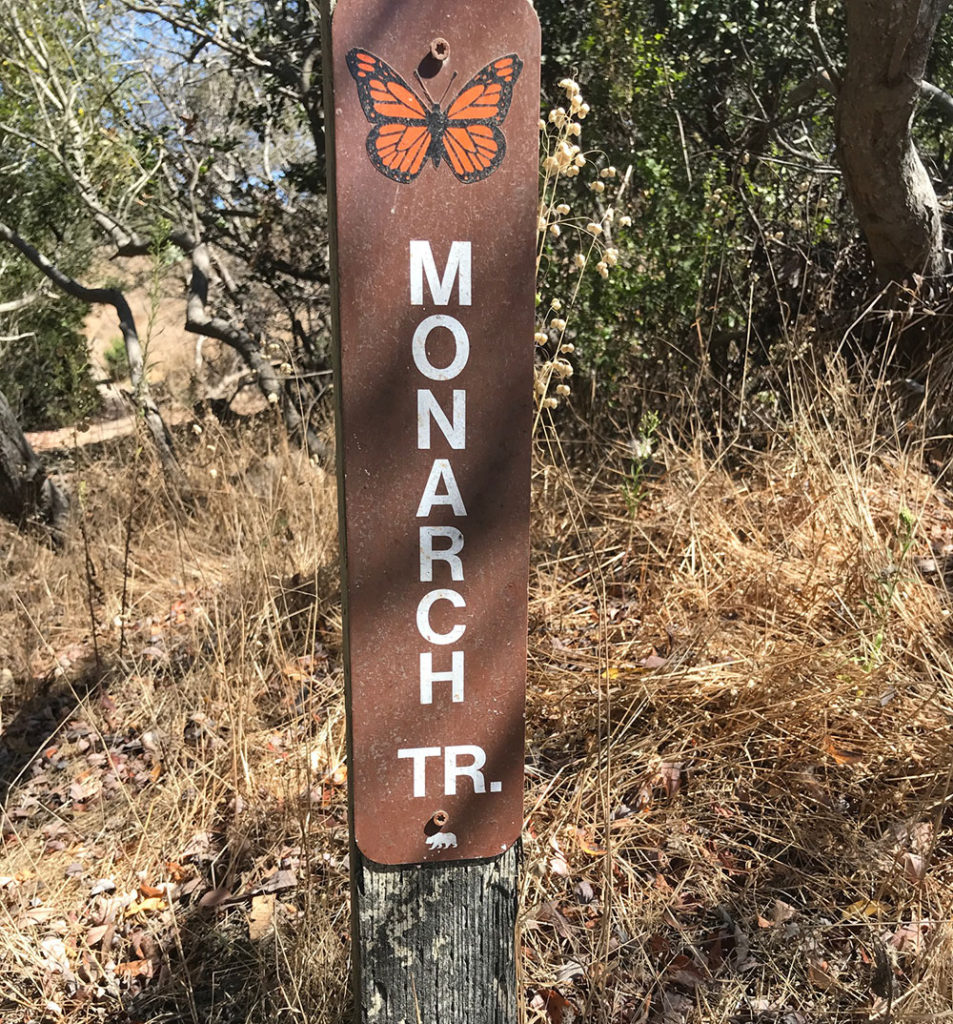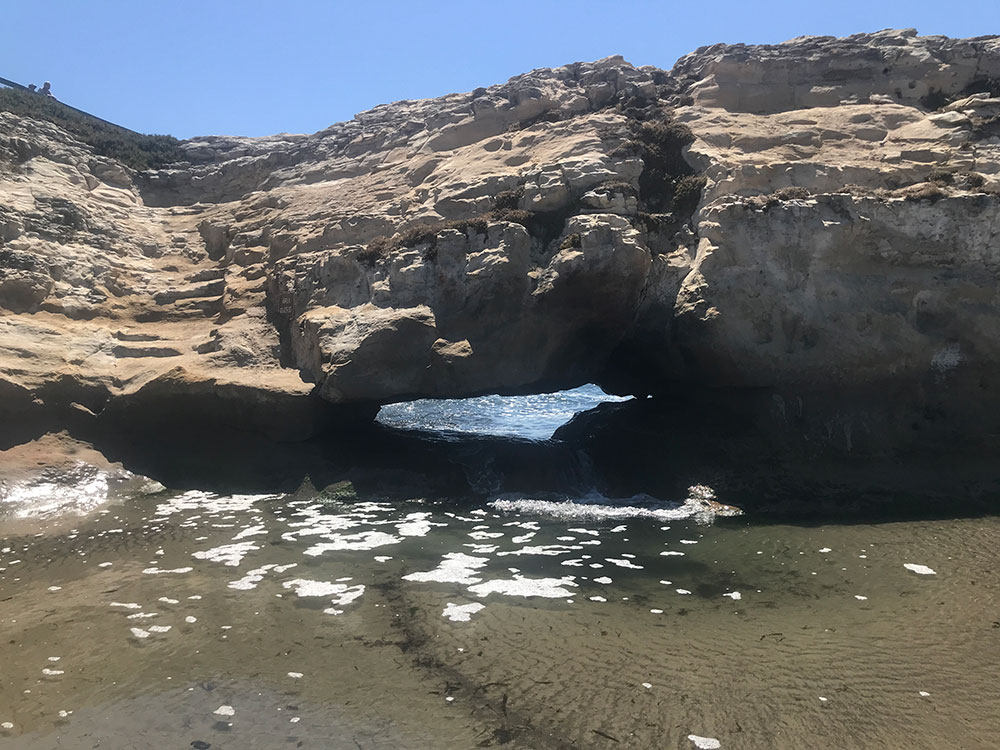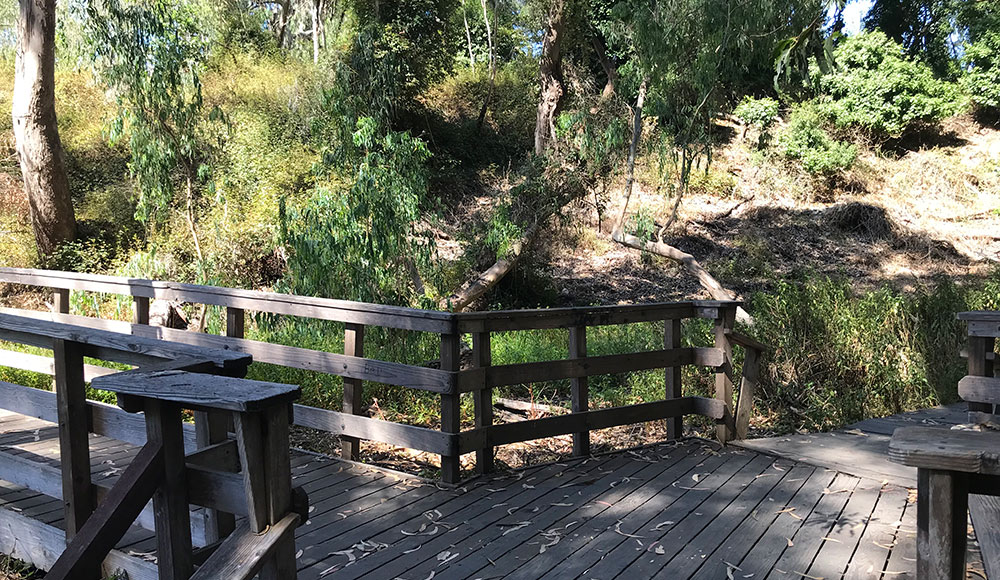Not all who wander are lost.
—J.R.R. Tolkien
I meet Santa Cruzans who were born here and stayed, but most of us chose to migrate to Santa Cruz. Or did it choose us? Every year 3 million tourists come to our coast for the climate, the protected environment and peaceful vibe of our town. Next month marks the yearly arrival of another visitor: the delicate and stunning monarch butterflies.
Starting in early October at the Monarch Trail behind Natural Bridges State Park, hikers will be able to walk among their spellbinding magic. If you dress right (got tie-dye?) and stay still, you might even be able to get a monarch to land on you. (Thoughtco.com)
Ballerina, you must’ve seen her
Dancing in the sand
And now she’s in me, always with me
Tiny dancer in my hand
—Elton John and Bernie Taupin

I drive the morning Watsonville-to-Santa Cruz rush hour, a period where no one rushes anywhere. Crawling north on Highway 1 from Freedom to Natural Bridges takes close to an hour.
Getting out of my Prius feels like a bone extraction. I thought of the old hippie proverb, “Blessed are the flexible, for they shall not be bent out of shape.” I park on Swanton Boulevard and walk behind Natural Bridges to the wooden planks of the monarch loop.
They’re coming soon. The migration of the monarch may be the most stunning example of the notion that the trail is the thing, not the end of the trail. For us it is step by step, for the monarch it’s wing flap by wing flap.
The monarch butterfly exhibits the most highly evolved migration pattern of any known species of butterfly or moth and perhaps any known insect (thoughtco.com). From October to January, you will be able to witness clusters of them in the shade, hundreds hanging in dense clusters, intertwining their feet along the eucalyptus tree branches.
At first you may mistake them for dead leaves. Just stand still until the sun falls upon them. One will take flight and then they will all rise into the air like a fluttering orange cloud.
Welcome Back Monarchs Day Festival
The boardwalk hike winds through a canyon filled with eucalyptus trees, where thousands of monarch butterflies spend the winter each year. The wooden walkway through the Monarch Grove Trail is wheelchair friendly. If you have a buddy who rocks and rolls in a wheelchair, this would be a sensational hike for you two.
On Oct. 13, from 11am to 4pm, there will be docents aplenty on the Monarch Grove Trail, when the first of the migration returns from the north. Natural Bridges State Beach has the only State Monarch Preserve in California.
“The caterpillar does all the work, but the butterfly gets all the publicity.”
—George Carlin
In the case of monarchs, the butterfly itself must work very hard to survive, and migrating thousands of miles to Natural Bridges is critical to their survival. Each migration is a multi-generational effort. They are tropical butterflies and at no point in their short life cycle can they freeze—be it as an egg, caterpillar, chrysalis or butterfly. So they move with the warm weather, here on the coast from Southern California to Canada. Adults live for two to six weeks, spending their time gathering nectar from flowers, mating, and laying eggs. Four to five generations repeat this cycle throughout the spring and summer.

“When a caterpillar bursts from its cocoon and discovers it has wings, it does not sit idly, hoping that one day it will turn back. It flies.”
—Kelseyleigh Reber
They choose the same eucalyptus grove at Natural Bridges as their temporary home because it’s located in a canyon which provides shelter from the wind, the trees filter in sunlight to keep monarch bodies warm, and eucalyptus trees flower in the winter, giving the butterflies food. (castateparks.gov)
Xerces.org says 6,500 monarchs come to Natural Bridges State Beach in Santa Cruz County. They found 6,547 at the Pacific Grove Monarch Sanctuary in Monterey County, 15,206 across the Ellwood Mesa complex (multiple sites) in Santa Barbara County and 319 at Camino Real Park in Ventura County. Lighthouse Field on West Cliff Drive is also a monarch destination.
Climate Change Is Suspect
As I walked the wooden path, I met a birder named Janice who wanted to know, “Why haven’t I seen any monarch butterflies this year?” For one, they haven’t arrived from Canada yet. But not seeing them all year? The number of butterflies dropped by more than half from Xerces’ November 2022 count to their January 2023 count. The 58% drop was the greatest of the count’s 27-year record due to the seemingly relentless parade of atmospheric river-fueled storms. The November western monarch butterfly count across California totaled 30% fewer butterflies than last year and just 5% of the population numbers from the 1980s. (foxweather.com)
Milkweed is crucial to monarch survival, as it is the only plant on which the female monarch will lay her eggs and the monarch larvae will eat. Milkweed also contains toxins that help protect the monarch caterpillar from predators.
But according to Natural Bridges naturalists and the Xerces Society, we should not plant milkweed too close to the coast. For our area on the Central Coast area, it is best to plant the milkweed 5 or more miles from the coastline. For more information on how you can help the monarchs in their recovery, check Xerces.com.
Trail Info
The Natural Bridges Monarch Trail is located at 2531 W Cliff Dr, Santa Cruz. It’s open from 8am to sunset. Parking is $10. Volunteers are likely to be able to help you finding amazing clusters of monarch butterflies. There are public restrooms. Dogs are allowed only in the parking lots and picnic areas, but not on the beach and trails (except for ADA service animals). Phone: 831-423-6409.














Some of this information is incorrect… butterflies can freeze, it is how some people humanely euthanize them if found broken, injured, etc. Also, for decades, milkweed has been planted and found all along the coastline which is why the monarchs come here. Natural Bridges used to hand out all varieties, including tropical, at the monarch festivals for decades. Xerces is run by fish and game, and there are a few main reasons why the number counts are down: taking away their natural habitats, not planting milkweed where it has always existed, pollutants of their habitats (think spraying/killers), and milkweed has been considered a weed and invasive and will take over farmland, which impacts farming revenue. Know your facts before believing Xerces, there are many other reports out there to read full of facts.